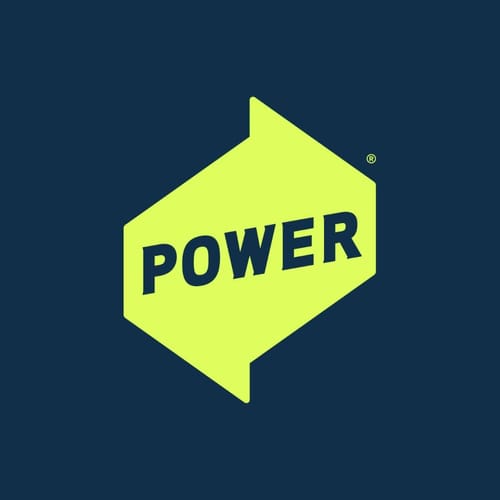
Company Spotlight: Power Home Remodeling Scales a $1B Business With Ruby on Rails
Power Home Remodeling isn’t your typical software company. It’s a $1B exterior renovation business with more than 4,000 employees across 24 U.S. cities, and at the heart of its operation is proprietary tech built almost entirely in Ruby on Rails.
“Power prefers to build our own custom software or use open source whenever possible," says Wade Winningham, Principal Developer at Power.
That philosophy has fueled Power’s transformation from a traditional remodeling business into a technology-led enterprise. Their internal platform, Nitro, was first developed in 2008 with a small team that had prior success with Ruby and Rails. V1 of Nitro offered sales reps a view of their sales and commissions, which the team was able to deliver within a few months.
As Winningham says, “We haven’t stopped shipping since.”
Today, Nitro touches every part of the business, from lead generation to hiring to installations. “Our custom Ruby on Rails applications are the operating system of the business and the fuel behind our vision of a fully tech-enabled workforce,” says Jenny Gray, VP of Application Development and Infrastructure. “Every single employee touches our applications in some way.”
Rather than buying third-party software, Power has committed to building and owning everything they can.
“Buying software off the shelf is an expensive proposition,” Gray explains. “It often forces inefficient business processes on the workforce. To change the off-the-shelf software, a company needs to spend even more money on outside developers or get in line with expensive software change requests.”
“At Power, we would rather invest in our employees and Business Technology team to build software that supports and meets the needs of the business processes we define. We believe that we know our business better than anyone else, so how could we rely on software that somebody else designed and built to run our business? It just doesn’t make sense.”
That investment now powers a tech organization of over 250 people. The team includes more than twenty feature development teams and a dozen shared service groups, who collectively ship to production up to 35 times a day.
“We retain top developer talent who have been here for years and know the business and Nitro inside and out,” Gray says. “It has been several years since we had a resignation letter from a Ruby on Rails developer.”
Much of that retention comes from Power’s culture of continuous investment, especially in talent and education. Each year, Power runs the Power Code Academy, a two-year program to teach high-performing employees how to code.
“We take 6 to 8 exceptional Power employees from all parts of the business, and we teach them how to code in Ruby on Rails,” says Gray. “Not only do we get to invest in the continued growth of our employees, but now we have all that great business knowledge working to design and develop needed features in Nitro.”
To date, the team has seen over 35 individuals graduate from PCA and is about to kick off their 6th class.
“We invest heavily in tech by investing heavily in ourselves,” adds Winningham. “That’s always money well spent.”
Power also maintains full control over infrastructure. “We believe so strongly in investing in our technology team that we even host our applications in our own private cloud using hardware in our own data centers,” says Winningham. “All developed, maintained, and run by Power employees.”
This infrastructure supports a steady stream of innovation. In 2022, the company launched Pulse, a customer-facing app that gives homeowners real-time updates on projects, from scheduling to sign-off.
Now, the team is turning its focus to AI. “We are developing Nitro Intelligence, an in-house AI platform designed to integrate GenAI capabilities seamlessly into Power’s existing technology stack,” says Ben Langfeld, a Principal Developer.
“The Nitro Intelligence Platform will provide product teams with easy access to AI-driven functionalities, eliminating reliance on external AI services while ensuring data security. Key features include multi-model support, retrieval-augmented generation (RAG), AI-powered business intelligence, and operational efficiency enhancements across various domains, such as customer interactions, sales analytics, and staff coaching.”
Even as Power expands into new technologies, Rails remains the foundation of their tech strategy.
“We strongly believe no other language can keep the same quick pace that Ruby can when it comes to delivering business value,” says Winningham. “Rails, specifically, gives developers more time to think through the specific problems they are trying to solve rather than the trivial details like getting data saved into a database.”
Rails has also enabled Power’s unique architectural approach. Their team runs a large Component Base Rail Application (CBRA), a notable achievement in enterprise-scale systems.
“We love being an example of a Component-Based Rail Application, which seems pretty rare these days,” says Winningham. “Many companies who’ve attempted it have ended up switching to Packwerk.”
To support their CBRA setup, Power has open sourced several internal tools:
- cobra_commander for managing CBRA apps
- power-tools, a set of utility gems
- Playbook Design System, a full design system for Rails, Swift, and React
“We’d love for others to use them and contribute,” Winningham adds.
This summer, Power will send more than 85 Ruby developers to RailsConf 2025 in Philadelphia, just a few miles from their headquarters. Don’t miss the opportunity to say hello to their team while you’re there!
With over 15 new Ruby hires planned this year and continued investment in homegrown tools, talent, and infrastructure, Power is showing what’s possible when Rails is used not just to build apps but to build an entire company.
March 31, 2025